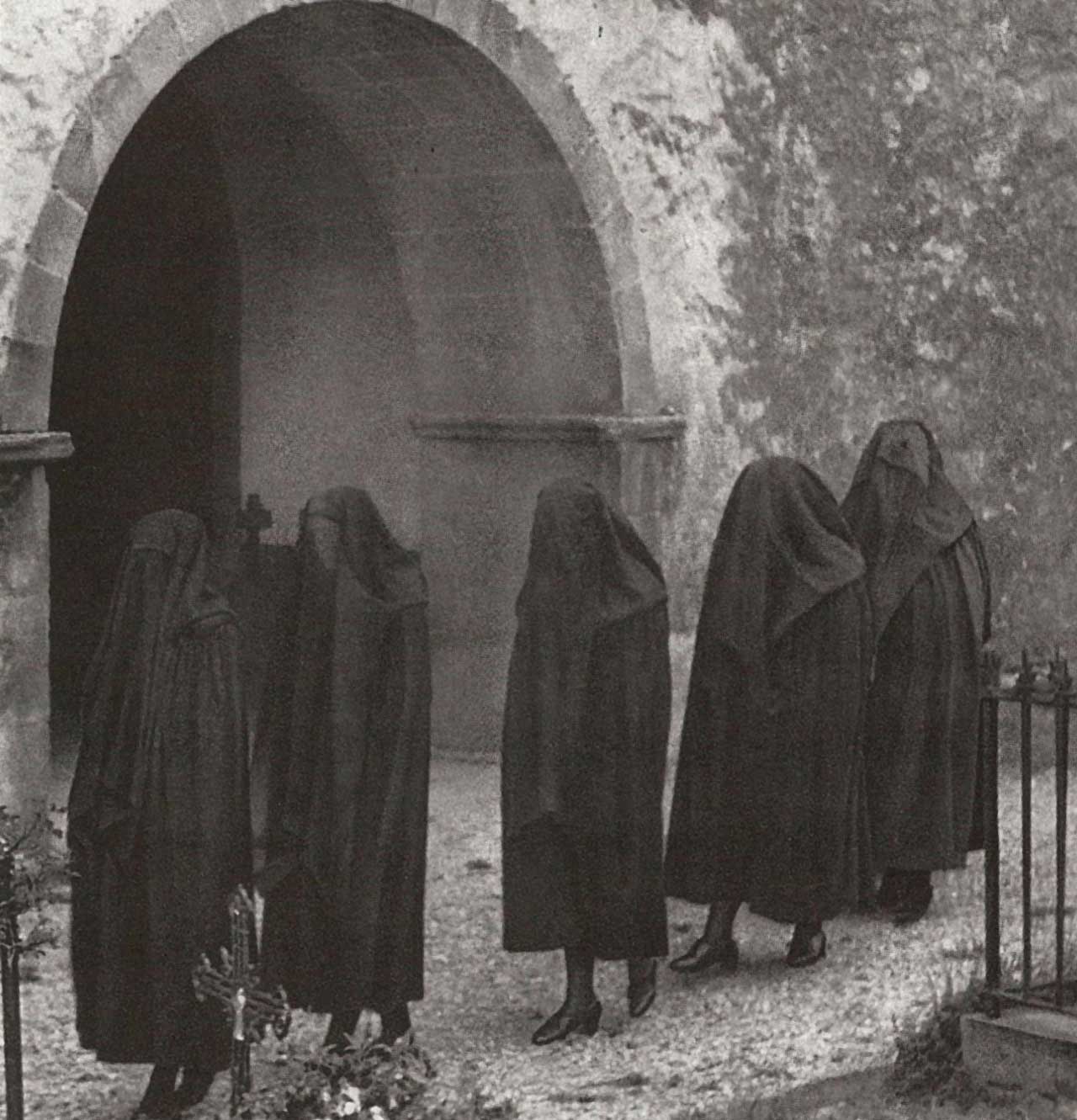Diferencia entre revisiones de «Ritos funerarios en vasconia/en»
De Atlas Etnográfico de Vasconia
(Página creada con «====[/atlas/ritos/Anuncio-de-la-muerte-a-las-abejas.jpg|Telling the bees. Source: ''Gure Herria''.|Erletxuak, erletxuak, <br />egizute argizaria, <br />nagusia hil da-ta, <...») |
(Página creada con «====[/atlas/ritos/Amortajamiento-de-un-nino-Durango.jpg|Infant shroud. Durango (B). Source: Gerediaga Association Archive: Germán Photographic Studio.|Jaiotzetik heriotza...») |
||
| Línea 35: | Línea 35: | ||
''Ritual formula to inform the bees of their keeper’s death''||]==== | ''Ritual formula to inform the bees of their keeper’s death''||]==== | ||
| − | ====[/atlas/ritos/Amortajamiento-de-un-nino-Durango.jpg| | + | ====[/atlas/ritos/Amortajamiento-de-un-nino-Durango.jpg|Infant shroud. Durango (B). Source: Gerediaga Association Archive: Germán Photographic Studio.|Jaiotzetik heriotza zor. <br />''When you begin to live, you being to die.''||]==== |
====[/atlas/ritos/Pipaon-1990.jpg|Pipaón (A), 1990. Fuente: Pilar Alonso, Grupos Etniker Euskalerria.|Hildakoari hobia eta biziari ogia. <br />''El muerto al hoyo y el vivo al bollo.''||]==== | ====[/atlas/ritos/Pipaon-1990.jpg|Pipaón (A), 1990. Fuente: Pilar Alonso, Grupos Etniker Euskalerria.|Hildakoari hobia eta biziari ogia. <br />''El muerto al hoyo y el vivo al bollo.''||]==== | ||
Revisión del 09:10 25 feb 2020

Funeral Rites in the Basque Country
Cultural issues surrounding death as a rite of passage, including death omens, death throes and ritual practices after death.
Mourners. Sara (L). Source: Veyrin, Philippe. Pays Basques de France et d’Espagne. Paris-Grenoble, 1951.



_1995.jpg/1200px-7.86_Salida_de_la_casa_mortuoria._Bera_(N)_1995.jpg)
.jpg/1200px-7.33_La_muerte_del_justo._Litografia_belga_del_s._XIX_procedente_de_un_caserio_de_Ibarruri_(B).jpg)
._(Representacion).jpg/1200px-7.84_Conduccion_del_cadaver_por_el_camino_mortuorio_gorpuzbidea._Orexa_(G)._(Representacion).jpg)
.jpg/1068px-7.259_Antiguo_cementerio_de_Jatsu_(L).jpg)
